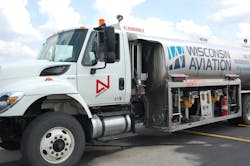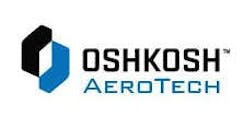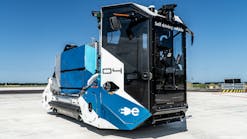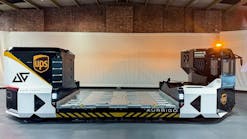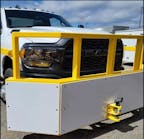Jeff Davis is a veteran of the fixed based operator (FBO) and airline service industries. Formerly, the general manager of Wisconsin Aviation at Dane County Regional Airport (MSN) in Madison, Wis., Davis has recently retired from FBO management and now leads the company’s safety, training and GSE fleet management. He started in aviation 35 years ago loading crop-dusters for his father in high school.
Wisconsin Aviation is the largest full-service FBO in Wisconsin with services ranging from flight instruction, charter, into-plane fuel and storage, aircraft and GSE MRO to airline above- and below-wing services.
Ground Support Worldwide spoke with Davis about key considerations FBOs should reflect on when selecting ground support equipment (GSE) for a specific station.
Ground Support Worldwide: In general, what are some of the biggest differences between GSE needs for commercial air travel and FBOs?
Jeff Davis: Airlines have a limited number of aircraft models and variants compared to general aviation (GA). Delta Air Lines currently uses five OEMs, with 28 models or variants of a model. Many of the variants have similar ground handling characteristics. Delta can focus their GSE on their current fleet. They can focus their ramp agent training on their current fleet.
I stopped counting at 148, the number of general aviation aircraft models I have seen come to us for service. We also offer into-plane services to federal, defense and state aircraft.
Rare is a day that goes by without a Department of Defense aircraft on the ramp. If it is a T-38, you must be able to offer an air start cart. The FBO must be able to service all and tow most of them.
And, if you are a professional FBO at a Part 139 commercial airport, you are usually offering back-up services to the airlines.
GSW: What can an FBO do to accommodate rarely seen aircraft?
JD: Being a full-service FBO with heavy maintenance and avionics gives our FBO resources to handle rare aircraft. Maintain good relationships with other tenants on the airport and rent or barter their equipment. Every airline and general aviation tenants at our locations know our equipment and help is only a phone call away. And so, when our FBO needs help, it is just as easy for us to get it.
GSW: On the other hand, what types of equipment do most, if not all, FBOs require?
JD: An airport authority should have minimum standards, which can specify what services an FBO must provide. For example, at a commercial airport FBO, services providers may need:
- Fuel trucks
- DC ground power
- Safety cones
- Nitrogen services for tires
- Oxygen service for cabins
- Aircraft door carpets
- A forklift for cargo
- Forced air pre-heater for reciprocating engine aircraft, specifically in northern climates
- Belt loader
- Lavatory cart
- Potable water cart
- Adjustable, portable stairs
- Ladders
- Multi-function towbars
- Tugs with different drawbar capacity
GSW: With these types of common equipment needs in mind, which types of GSE are generally not necessary for FBOs to keep on hand?
JD: Unless you handle military and Part 121 airline charters, there is less need for an air start.
GSW: How is size or capacity of GSE units influenced when spec’ed for FBO operations?
JD: On average, ground power needs are limited to 28.5VDC unless you see a lot of Boeing Business Jets (BBJs). Tow vehicle drawbar requirements are less given the smaller ramp weights of the aircraft. I like to see at least one tug with at least a 10,000-pound drawbar. The long-range aircraft market is hot, and we are seeing more large business jets. For a forklift, minimums would include a 5,000-pound capacity with a 144-inch mast height.
GSW: How can geographic location, climate, traffic volume and other factors influence a ground handler’s need when selecting GSE?
JD: The southern climates will have more call for cabin air conditioning on the ramp. Northern climates must have deicing capability, and more customers are looking for anti-ice capabilities as well.
GSW: What other factors do FBO managers need to consider when selecting GSE for their station?
JD: Customers expect GSE to look clean and well-maintained. You don’t give the customer confidence when you plug in a rusty GPU leaking oil and belching blue smoke into their $30 million jet. Consider your branding on GSE. We advertise our flight training on our refueling trucks.
GSW: What challenges come with supplying GSE to FBOs?
JD: Most FBOs will have higher standards for incoming GSE. We don’t like scratches on the finish. We may press an OEM for solutions to even minor technical problems.
GSW: Do FBOs have unique challenges when it comes to managing their GSE?
JD: We don’t buy on volume like the airlines. This puts the FBO at a pricing disadvantage. And some OEMs may be less responsive to the problems of an FBO.
Also, corporate customers are beginning to ask many FBOs about green technology in their GSE.
GSW: How much stress is placed on GSE budgets as pressure to invest in the latest technology increases?
JD: A tremendous amount! Most of your smaller FBOs run off of very tight budgets. Customers want the highest quality GSE, but often don’t realize just how expensive it is. Calculate your forecast return-on-investment (ROI) to assist in purchasing decisions. But then calculate your real ROI after a term of ownership. Most people don’t, but it can tell you a lot about your purchasing decision and GSE management.
GSW: Aside from financial considerations, how can employee training requirements influence GSE purchasing decisions?
JD: High turnover and or low-quality employees can be very hard on equipment. Many entry-level workers have little experience operating different types of equipment. As I said before, the easier to use, the easier to train on, the better. If you hire people that enjoy helping others, we have found everything else falls into place.
GSW: Is the lifecycle for an FBO’s piece of equipment longer than similar equipment used in a commercial setting?
JD: Not necessarily. It depends a lot on the type of business an FBO sees. Smaller ones with low volumes can make theirs last a long time. Busy FBOs may use theirs up quicker.
GSW: When addressing GSE, how much is service and customer satisfaction driving an FBO’s decisions?
JD: Customer satisfaction is everything! Treat every person, from a one seat crop-duster pilot to the business jet pilot to the airline cabin crew the same – like they are guests in your house. Regardless of whether it is a scheduled airline, airline charter, corporate, military or family taxiing in for lunch, people expect the station or FBO to have the resources to service them and return them to the air quickly and safely.
Remember, aircraft do not buy services and fuel from you – people do. Our stated commitment is always “Done right, on time, and with a smile.”
